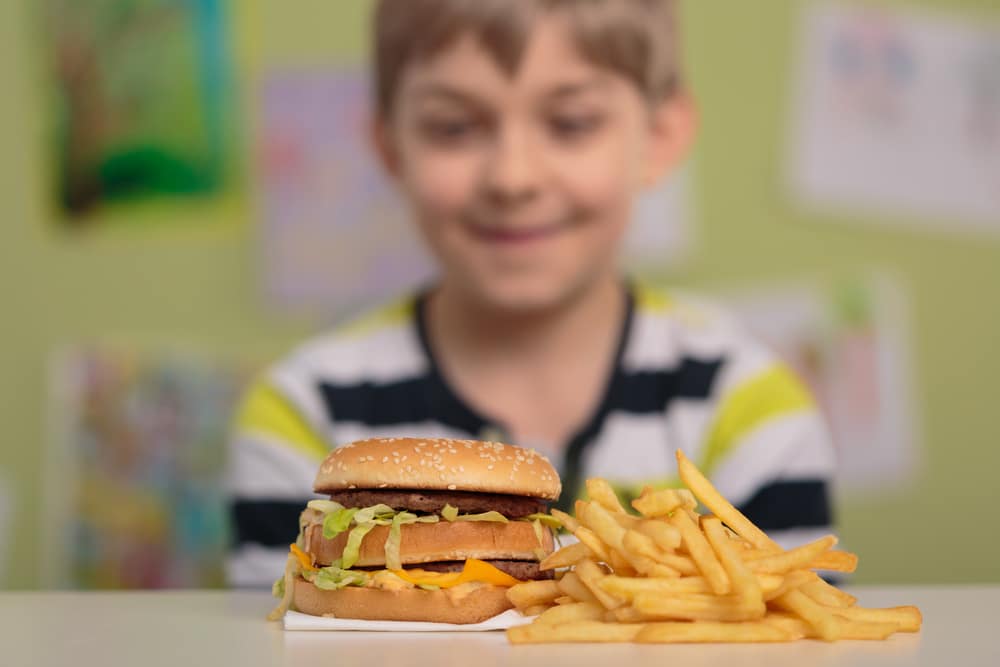For the First Time Ever, More Kids Are Obese Than Underweight, Thanks to Junk Food


For the first time in human history, more children are obese than underweight. A UNICEF report reveals that one in ten school-age children worldwide now live with obesity, signaling a global nutritional crisis. Driven by the dominance of cheap, ultra-processed food, this shift is reshaping childhood health, development, and even survival — marking a dramatic turning point in global malnutrition trends.
The Global Turning Point

According to UNICEF, 9.4% of children aged 5–19 are obese, slightly higher than the 9.2% who are underweight. In 2000, nearly 13% of children were underweight, while only 3% were obese. This reversal reveals a troubling trend: undernutrition is no longer the biggest threat to children’s well-being — overnutrition and the prevalence of energy-dense, nutrient-poor diets are now fueling a new form of global malnutrition.
From Undernourished to Overfed

Obesity has now overtaken underweight cases in nearly every region except sub-Saharan Africa and South Asia. In many nations, the issue is no longer food scarcity, but poor-quality diets. Processed and sugar-heavy foods have displaced traditional staples, leading to what experts call “the double burden of malnutrition” — where children face obesity and micronutrient deficiencies simultaneously, impacting both physical growth and cognitive development long before adulthood.
The Rise of Ultra-Processed Foods

Ultra-processed foods — from cereals and biscuits to sodas and instant meals — dominate supermarket shelves and school canteens. They’re cheap, addictive, and aggressively marketed to children. Made through industrial processes and packed with additives, these products replace natural foods like fruits and vegetables. UNICEF warns that this global dependence on UPFs is eroding children’s nutrition at a crucial time for growth, learning, and brain development.
The Double Burden of Malnutrition

Many low- and middle-income countries now face a tragic paradox. Children are both undernourished and obese, consuming high-calorie, low-nutrient food that fills bellies but not bodies. In South Africa, for example, one in eight children is overweight, while one in four is stunted. The coexistence of hunger and obesity reflects deep inequality — where poor-quality food is affordable and abundant, while fresh, nutritious options remain expensive or inaccessible.
Global Hotspots of Childhood Obesity

The crisis isn’t limited to rich nations. The highest childhood obesity rates are found in Pacific Island countries, where traditional diets have been replaced by imported, energy-dense food. In Niue, 38% of children are obese; in the Cook Islands, 37%. Even affluent nations show alarming figures — Chile at 27%, the U.S. and the UAE both at 21%. Obesity is no longer regional — it’s universal. In fact, technology also contributed to its rise.
The Digital and Retail Trap

The rapid increase of online grocery stores, delivery apps, and targeted digital ads has made junk food unavoidable. Children are bombarded daily with persuasive marketing that normalizes fast food and sugary snacks. UNICEF notes that even schools — once safe spaces for health education — are filled with vending machines and branded promotions. This “food environment,” not personal choice, is shaping how entire generations learn to eat.
Consequences That Last a Lifetime

Childhood obesity is deadly. It raises lifelong risks of heart disease, type 2 diabetes, and certain cancers. Beyond health, the World Obesity Federation estimates the global economic cost of overweight and obesity will exceed $4 trillion annually by 2035. As millions of young people face preventable illness, the financial and human toll underscores the urgent need for systemic dietary reform worldwide.
When Policy Takes Action

Some nations are beginning to fight back. Mexico has banned ultra-processed foods in schools and restricted junk food advertising to children. But progress remains uneven. UNICEF warns that “unethical business practices” from powerful food corporations often undermine health policies. Without strong government safeguards and public awareness, these companies will continue shaping food laws, ensuring that profit, not nutrition, drives what ends up on children’s plates.
A Call for Global Accountability

UNICEF calls for decisive government action: restrict junk food marketing, enforce warning labels, and subsidize fresh foods so every family can afford healthy meals. Executive Director Catherine Russell emphasizes that obesity is not a matter of choice but of environment. “Children are growing up in systems that fail them,” she says. Addressing this crisis requires courage to confront industries that profit from unhealthy childhoods before it’s too late.
